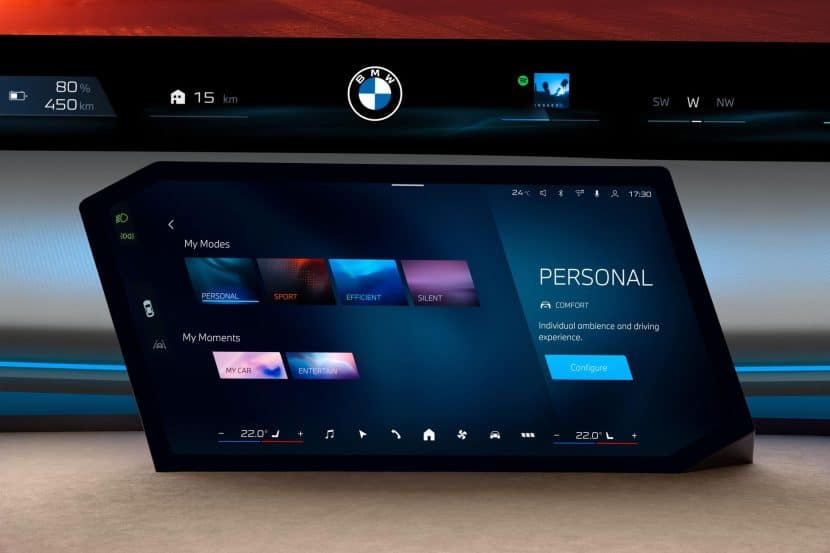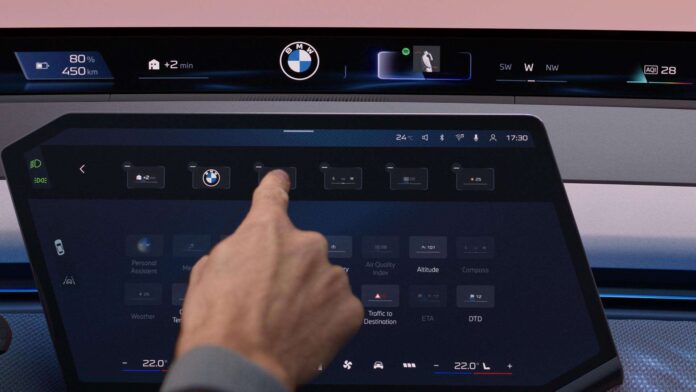BMW will introduce the tenth-generation iDrive, known as iDrive X, on the Neue Klasse platform later this year. The iX3 SUV will be the first vehicle to get the upgraded system, but eventually all of the company’s models, including its internal combustion engine vehicles, will shift to iDrive X.
The latter marks a pivotal moment in BMW’s digitization strategy, which has so far lagged behind that of upstarts like Tesla, Rivian, NIO, and Xiaomi. Being a hardware-focused company, the Bavarian automaker was a little late to recognize the importance of software-defined vehicles, a fact reflected in its tenth-place ranking in the Wards Intelligence 2023 SDV Study (Tesla, Rivian, NIO, and Lucid led the list).
Nevertheless, most startups face research and development (R&D) constraints, so BMW has time to catch up. Furthermore, as we saw with Tesla, an overemphasis on software could also lead to neglect in quality and reliability. After all, the EV manufacturer received a below-average rating in J.D. Power’s 2025 Vehicle Dependability Study (VDS) and ranked third-last in its 2024 Initial Quality Study (IQS).
What iDrive X Means for BMW

However, given that SDVs ultimately represent a $650 billion value opportunity, and with 90 percent of future car features expected to be differentiated via software, it is essential for BMW to get the new iDrive right. And for what it’s worth, the early demonstrations do look promising.


Indeed, with its advanced displays, Amazon-powered AI assistant, and improved interface, iDrive X provides a more intuitive and personalized experience than iDrive 9. The system’s highlight is the pillar-to-pillar Panoramic Vision, which integrates seamlessly with the 3D head-up display (HUD), revamped center console, and multi-function steering wheel. Additionally, the Android-based software will have more apps than its predecessor (e.g., Zoom), along with continued support for Apple CarPlay and Android Auto.
Notably, the Chinese iDrive X will differ from those in Western markets. This is because China is one major automotive market where software is valued more highly than hardware, with nearly 60 percent of customers willing to shift brands for better connectivity features. Therefore, automakers there need to offer better digital services and apps, especially for entertainment.
Going Beyond CarPlay and Android Auto?


With iDrive X, BMW also hopes to eventually reduce its reliance on CarPlay/Android Auto, aiming to gain greater control over the dashboard and the associated commercial opportunities. Remember that the Munich-based automaker was always hesitant to adopt CarPlay/Android Auto, as it wanted to build its own automotive-tech ecosystem.
However, almost 80 percent of car buyers will not consider brands without CarPlay, whereas the majority of BMW’s competitors, including Mercedes-Benz and Audi, offer Android Auto. Hence, BMW hasn’t done what General Motors did — which was to eliminate the two apps altogether. Instead, it has built a more holistic platform that includes CarPlay/Android without being exclusively dependent on them.
Ultimately, no carmaker can build its infotainment system entirely on its own, so BMW will always need to have a harmonious relationship with tech giants like Google, Amazon or Apple. The threat of getting cannibalized by them is very much real, considering the monopolistic tendencies of Silicon Valley. But that’s a risk BMW and other OEMs will have to take in order to keep their customers happy.
Of course, in an ideal world, BMW would like to match Tesla and Rivian. Like GM, they also exclude CarPlay/Android Auto, yet the two startups have not faced the same backlash as their customers are content with the native infotainment systems. However, to achieve that, the Munich-based carmaker will need to further advance its SDV capabilities, even beyond iDrive X and the Neue Klasse platform.



